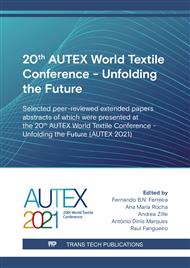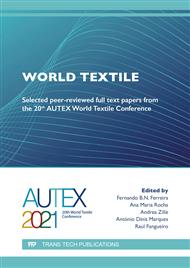p.155
p.163
p.169
p.175
p.185
p.191
p.201
p.209
p.217
Flex-STEx - An Insight into the Development of a Flexible Smart Textiles Experience Kit for Teaching Engineering Students in an Innovative Way
Abstract:
Successful professionals are expected to adapt to current requirements at all times and keep their knowledge up to date. The Smart Textiles field poses a particular challenge in this respect - in addition to their own specialist knowledge, the focus here is on interdisciplinarity and thinking outside the box. The focus will be on E-Textiles, the combination of electronic with textile products. For this purpose, a flexible Smart Textiles Experience kit called Flex‑STEx is developed using a design thinking approach and involving future users in the development process. This application-oriented construction kit is intended to help extend the limits of individual knowledge, stimulate creativity and provide the ability to initiate product development. A further added value for students will be a deeper understanding of innovation and interdisciplinary challenges. This paper gives an insight into the work in progress concerning the development of this novel kit.
Info:
Periodical:
Pages:
217-222
Citation:
Online since:
July 2022
Authors:
Keywords:
Price:
Сopyright:
© 2022 Trans Tech Publications Ltd. All Rights Reserved
Share:
Citation:



